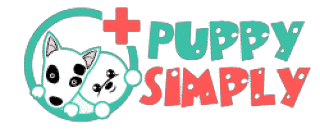This site is supported by our readers. We may earn a commission, at no cost to you, if you purchase through links.
 Dog sitting positions can reveal a lot about your furry friend’s health, mood, and personality.
Dog sitting positions can reveal a lot about your furry friend’s health, mood, and personality.
If your pup sits upright and alert, they’re probably focused or excited, while a “lazy sit” (with legs out to the side) might just mean they’re comfy—or it could hint at joint issues like hip dysplasia.
A “puppy sit,” common in young dogs, helps with balance as they grow.
But if your dog regularly sits awkwardly or shifts positions quickly, it might signal pain or discomfort. Pay attention to their usual style; it’s like their favorite chair—comfort meets habit.
Curious if their sit speaks volumes? Stay tuned!
Table Of Contents
- Key Takeaways
- Dog Sitting Positions
- Health Implications of Sitting
- Decoding Dog Body Language
- Sitting Positions and Health
- Dog Sitting and Social Dynamics
- Sleeping Positions and Meanings
- Interpreting Dog Sitting Habits
- Frequently Asked Questions (FAQs)
- What do dog sitting positions mean?
- What is an abnormal dog sitting position?
- What is a bad sitting posture for dogs?
- What do dog stances mean?
- Why does my dog sit on my clothes?
- Can sitting positions indicate a dogs energy level?
- Why does my dog sit facing away?
- Do sitting habits differ between dog breeds?
- Can weather influence how my dog sits?
- Why does my dog sit with crossed legs?
- Conclusion
Key Takeaways
- Watch your dog’s sitting posture to catch signs of joint pain, discomfort, or potential health issues like hip dysplasia early.
- Lazy sits are common in puppies but can signal joint problems in adult dogs if they happen often.
- Different sitting habits, like quirky or straight sits, can show your dog’s comfort, energy level, or mood.
- Pay attention to any changes in sitting styles—they might point to pain, muscle stiffness, or other health concerns.
Dog Sitting Positions
When your dog sits, their posture can reveal more than just how they’re feeling—it might even hint at their health.
A dog’s sitting posture speaks volumes—watch closely for clues about their health, comfort, or emotions.
By paying attention to how they sit, you can spot normal habits, playful quirks, or signs of discomfort that shouldn’t be ignored.
Puppy Sitting and Development
Puppy sitting often reflects natural behavior tied to growth stages.
Flexible joints and ongoing bone development make positions like the "puppy sit" part of their normalcy range.
While it looks cute, posture problems may arise if habits linger.
Early training impacts future sitting habits, so encourage straight sits to support healthy bone development during these important growth phases.
Positive reinforcement, a key element in reward-based training, can help guide them.
Lazy Sitting and Comfort Preferences
Young dogs often try a lazy sit because their joint flexibility makes it easy and comfortable.
For a relaxed dog, this posture might just be about seeking relief after play or training.
Some breed tendencies favor this "dog slouch" more than others.
Watch for behavioral cues—if lazy sitting looks constant, it could hint at discomfort rather than simple dog comfort.
Unusual Sitting Styles and Breeds
Some dog sitting positions, like the “human imitation” sit, are common in large, long-legged breeds like Great Danes.
This posture might ease spinal pressure or show comfort-seeking behavior.
Breed predisposition plays a role here, but these dog sitting positions’ meaning is often simple: they enjoy the reaction.
Encourage straight sitting over quirky poses to promote healthy posture and spine alignment.
Health Implications of Sitting
When your dog sits in an unusual way, it could be a sign of underlying health issues.
Paying attention to their posture helps you spot potential problems like joint pain, arthritis, or muscle inflammation early, which can be considered a complete concept in understanding canine health.
Joint Pain and Arthritis
Noticed your dog sitting funny or avoiding movement?
That "lazy sit" could hint at joint pain or arthritis.
Look out for stiffness, reluctance to play, or uneven weight shifting.
Joint supplements and balanced exercise might help, but don’t skip veterinary care.
Addressing mobility issues might involve high quality supplements for improved joint health.
Catching arthritis symptoms early guarantees better pain relief and keeps your pup comfy in their favorite dog sitting positions!
Spine and Muscle Inflammation
Ever wonder why your pup’s posture changes?
Spine pain and muscle inflammation can sneak up on dogs, leading to discomfort and altered dog sitting positions.
Inflammation causes stiffness or muscle spasms, making it tough for them to relax. Watch for signs like slouching or uneven pressure.
A dog’s spinal support may be aided by external devices. Pain relief and timely veterinary intervention help restore proper dog posture and comfort.
Hip Dysplasia and Cruciate Ligaments
Shifts in dog sitting positions might signal joint problems like hip dysplasia or a torn cruciate ligament.
Dysplasia development often comes with posture changes aimed at hip pain relief, while ligament tear signs include one leg extended, avoiding weight on the sore one.
Surgical options exist for severe cases, but early detection keeps these conditions from causing long-term discomfort.
Decoding Dog Body Language
You can learn a lot about your dog’s emotions and needs by paying attention to their body language.
From the wag of a tail to the set of their ears, every little gesture tells a story.
Tail and Ear Positions
Tail wags and ear angles are like your dog’s secret communication signals.
A high tail and perked ears often mean excitement or alertness.
Droopy ears and a tucked tail? That’s a sign of stress.
Breed differences play a role too—hounds rely on ear angles, while wagging tails scream joy in retrievers.
It’s pure dog behavior genius in action!
Facial Expressions and Postures
Dogs don’t speak, but their facial cues and posture changes sure do.
Look for these signs to interpret dog body language:
- Raised eyebrows show curiosity or alertness.
- Yawning might signal stress, not sleepiness.
- Wide eyes reveal surprise or fear.
- Relaxed ears mean comfort, while pinned ears indicate stress signals.
- Wagging tails with tense bodies suggest mixed emotions. Understanding dog tail language can further clarify these feelings.
Social Interactions and Communication
Dog sitting positions often reveal social dynamics.
Sitting on your feet may signal affection seeking, but plopping on another dog could be playful sitting or asserting dominance.
Scent marking through sitting shows a mix of bonding and ownership.
Pack hierarchy influences these behaviors, so watch for subtle signs of dog dominance behavior.
Decoding dog body language builds better communication and connection.
Sitting Positions and Health
You can learn a lot about your dog’s health just by paying attention to how they sit.
Changes in their sitting positions might signal joint pain, muscle stiffness, or other underlying issues that shouldn’t be ignored.
Types of Dog Sits
A dog’s sitting posture reveals much about their mood and health.
The Straight Sit, with paws aligned neatly under the body, promotes good posture.
The Lazy Sit, or sloppy sit, often signals relaxation but could hint at joint issues if frequent.
The Human-like Sit may simply be playful or mimicry, while the Bow Position signifies enthusiasm and playfulness.
Joint Flexibility and Age
Young dogs often sprawl into lazy sitting positions thanks to flexible puppy joints and soft growth plates.
As dogs mature, joint flexibility decreases, leading to adult stiffness.
Some breeds are more prone to joint problems, like hip dysplasia or arthritis, impacting their comfort as seniors.
Older dogs may avoid certain sitting styles, signaling the need for extra attention to promote senior comfort.
Signs of Discomfort or Pain
You can sometimes spot dog discomfort through altered gait or posture changes, like avoiding one side while sitting.
Reluctance moving, vocalizations during movement, or even appetite loss are other clues.
One should also be aware that changes in appetite can also be a sign of illness.
If your pup’s dog sitting positions look awkward or unusual, it might signal joint problems or broader dog health issues. Trust your gut, and consult a vet when needed!
Dog Sitting and Social Dynamics
When your dog sits, they’re not just signaling comfort; they’re often communicating about their social world.
From bonding and security to pack dynamics, their sitting habits can reveal a lot about their relationships and instincts.
Bonding and Security Behaviors
When your pup drops onto your lap or claims your favorite spot, it’s often about bonding and reassurance.
Dogs seek closeness using scent marking and bed sharing to feel secure.
This behavior ties to pack mentality, showing trust in you as their pack leader.
Observing these dog sitting positions strengthens understanding of dog communication and deeper connections.
Dominance and Submission Signs
After bonding and security behaviors, dog sitting positions can also reflect dog dominance or submission.
Postural dominance like mounting behavior or resource guarding shows confidence, while dog submissive behavior includes play bow gestures or submissive urination.
These dog signals are normal parts of dog communication.
Watch sitting styles paired with tail tucks or relaxed ears—they might indicate your pup’s mood and social stance.
Pack Leadership and Hierarchy
How do dog sitting positions reveal pack dynamics?
Dogs often look for structure in their social hierarchy. An “alpha dog” might assert leadership by sitting higher or closer to the group’s center.
Watch for subtle cues like resource guarding or dominance in a relaxed position.
Understanding dog pack dynamics helps manage leadership styles and builds trust in your furry pack.
Sleeping Positions and Meanings
Your dog’s sleeping position can tell you a lot about their comfort, emotions, and even health.
From curled-up coziness to sprawled-out relaxation, each pose reveals something unique about their needs and personality.
Side Sleeping and Relaxation
Side sleeping shows your dog feels secure and content.
It’s a sign of deep sleep and a safe environment.
This comfortable sleep position reflects trust and dog relaxation.
Their body language, with stretched legs, conveys no vulnerability signs, indicating they’re truly at ease.
Observing side sleeping helps you decode dog sleeping positions’ meaning and your pet’s comfort levels.
Curling Up and Temperature Regulation
When your furry friend curls into a ball, it’s not just cute—it’s practical!
This instinctive position reduces exposed surface area, conserving body heat.
Dogs often adopt this posture to seek shelter or warmth.
Breed differences and fur thickness matter; thinner-coated pups may curl up more often.
Dog sleeping positions like this reflect their need for comfort and temperature regulation.
Superman and Lion Poses
Ever notice your dog sprawled out with legs stretched straight back?
That’s the Superman Pose—common in smaller breeds or young dogs, showing relaxation or cooling off.
Meanwhile, the Lion’s Pose, head resting on paws, signals light rest, not deep sleep.
Both sleeping styles reveal their comfort, body temperature needs, and energy levels, showcasing fascinating dog sleeping positions and their meanings.
Interpreting Dog Sitting Habits
When you watch your dog sit, you might be noticing more than just a cute pose. Their sitting habits can reveal clues about their comfort, health, and even emotions.
Your dog’s sitting style whispers secrets about their mood, health, and what they need from you.
Monitoring Health and Wellbeing
Observing dog sitting positions can reveal a lot about canine health. Watch for behavioral changes, like hesitancy or shifts in movement.
Alongside gait analysis and posture assessment, keep an eye on subtle signs of discomfort.
Create a comfortable home environment and schedule veterinary checkups if anything seems unusual. Monitoring dog health through sitting habits helps spot potential dog sitting health issues early.
Regular veterinary visits are paramount for vaccinations and prevention.
Addressing Unhealthy Sitting Habits
If your dog’s sitting posture looks off, tackle it early. Posture correction doesn’t have to be tricky. Try these steps:
- Strengthen with simple exercise routines.
- Use assistive devices like ramps or orthopedic mats.
- Make environmental adjustments for comfort.
- Watch for health issues like hip dysplasia or luxating patella.
- Seek veterinary intervention when issues persist.
Changes in a dog’s posture can indicate underlying health issues, so monitoring is important.
Strengthening Bond and Communication
Building trust with your dog starts with mutual understanding.
Pay attention to dog communication cues, like sitting close for affection.
Use positive reinforcement during shared activities to strengthen your bond.
Showing empathy by interpreting dog behavior fosters trust.
Understanding dog habits, paired with empathetic communication, turns daily routines into moments of connection—helping you nurture love and deepen dog bonding effortlessly.
Frequently Asked Questions (FAQs)
What do dog sitting positions mean?
A dog’s sitting position can reveal their mood, comfort, or health.
A sloppy sit in puppies is normal, but in adults, it might hint at joint issues.
Straight sitting promotes good posture and spinal health.
What is an abnormal dog sitting position?
When something feels off, it probably is."
If your dog’s sitting posture looks unnatural—like an uneven weight shift, side-leaning, or stiffness—it can signal joint issues, pain, or injuries.
Monitor closely; consider a vet visit.
What is a bad sitting posture for dogs?
A bad sitting posture, like a “sloppy sit” or legs splayed outward, might hint at joint pain, hip dysplasia, or spine issues.
If it’s not occasional, check with your vet to confirm your pup’s comfort.
What do dog stances mean?
Think of a dog’s stance like a secret handshake—each position tells you something unique.
From play bows signaling fun to stiff postures showing stress, a dog’s stance is their way of sharing emotions. From play bows signaling fun
Why does my dog sit on my clothes?
Your dog sits on your clothes because they smell like you.
It’s their way of feeling close, secure, and comforted.
Plus, your scent is like their favorite blanket—cozy and familiar.
Can sitting positions indicate a dogs energy level?
Roughly 30% of dogs show changes in sitting positions based on energy levels.
A straight sit often signals focus or readiness, while a sloppy sit might suggest relaxation, fatigue, or even boredom after play.
Why does my dog sit facing away?
Your dog might sit facing away as a sign of trust, showing they feel safe with you watching their back.
It’s also their way of keeping an eye on the surroundings for both of you.
Do sitting habits differ between dog breeds?
Your dog’s sitting habits can feel like an art show, each breed bringing its unique brushstroke.
Long-legged breeds sit human-like for comfort; compact breeds curl for coziness.
Breed size, joint health, and flexibility all play roles.
Can weather influence how my dog sits?
Weather can impact how your dog sits.
Cold conditions might make them curl up tightly for warmth, while warm weather encourages sprawled or splayed positions to stay cool.
Always watch for discomfort or unusual behavior.
Why does my dog sit with crossed legs?
Your dog’s crossed-leg sit is like their own quirky yoga pose!
It’s typically a sign of comfort and relaxation, though frequent crossing might indicate joint stiffness or discomfort, so keep an eye out for changes.
Conclusion
Did you know over 80% of dogs show health clues through their posture?
Paying attention to dog sitting positions can reveal much about their comfort, mood, or health.
Whether it’s a lazy sit hinting at relaxation—or joint pain—or an upright stance showing focus, their body language matters.
Watch for shifts or discomfort in their usual style.
By understanding dog sitting positions and what they mean, you’ll strengthen your bond and catch potential issues early for a happier, healthier pup. Dog sitting positions can reveal a lot.
- https://www.pinterest.com/pin/690458186615901223/
- https://www.tiktok.com/@head2tailmobility/video/7318415642569248042
- https://www.justanswer.com/dog-health/8xt5z-today-noticed-dog-sitting-type-praying-position-always-don.html
- https://www.dogs4motion.com/en/blog/510-the-importances-of-proper-sitting-in-dogs
- https://www.cobberdogking.com/en/blog/article/dog-body-language

















